Meet Lucas Joyce, GreenSmart Apprentice

Tell us a bit about you My name is Lucas, and I am currently an apprentice with GreenSmart Services. My hobbies include football and running, and I am a big music fan. What were you doing before you joined GreenSmart Services? Before I joined GreenSmart Services, I was at secondary school, studying various different subjects. Your career with GreenSmart to date Currently, I am in the middle of an apprenticeship with GreenSmart Services. This phase of my career is an exciting learning experience, and has given me the opportunity to work alongside professionals, improving my skills in a practical setting. Let’s get to know more about you with some quickfire questions: If you could go anywhere in the world, where would it be? Australia What are three things you can’t live without? Football, food and music Is there a hobby/activity you’d like to get better at? Running
Will energy bills go down in 2024?
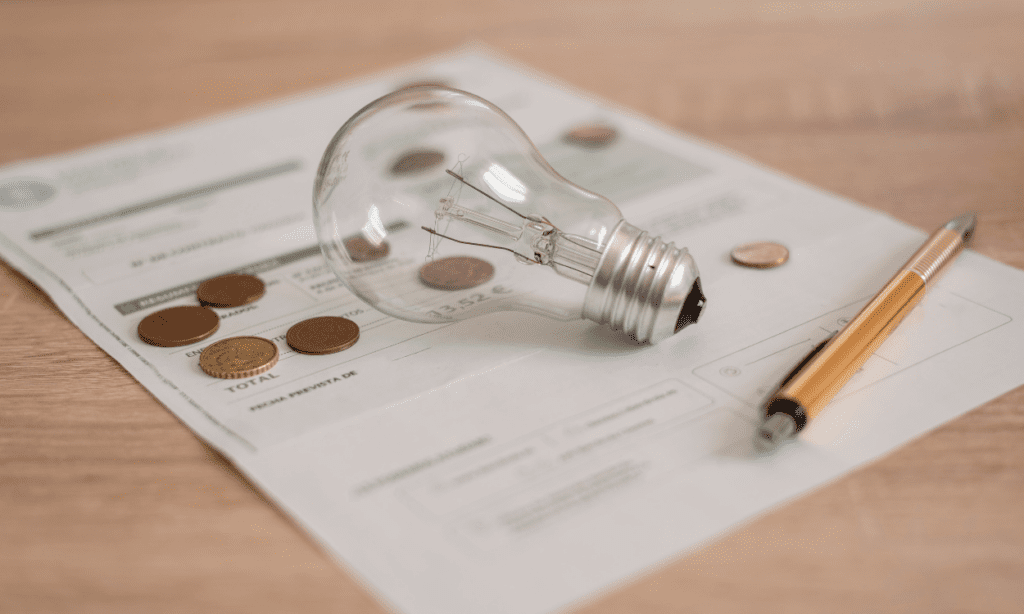
With the cost of living unfortunately continually dominating the thoughts of most people across the UK, it’s not surprising that many of us are questioning (and hoping) if energy bills will go down in 2024. In this article, we are going to explore the current state of the energy crisis and use these, and the opinions of experts, to estimate whether or not energy bills are likely to go down in 2024. Here’s hoping! Why are energy bills so high? The UK has been experiencing a ‘Cost of Living Crisis’ since 2021. The cost of living crisis refers to a period in which the cost of everyday essentials such as food, fuel and bills increase quicker than the average household income. This results in people having less expendable income than they previously have had. This cost of living crisis has hit the UK particularly hard for a number of reasons. For example, ongoing impacts from the pandemic caused demand to increase, and the war between Ukraine and Russia threatened supplies, which drove up the price of gas and electricity even more. More recently, the conflict in Gaza also increased prices. Will bills go down in 2024? Getting to the question we’re all dying to know the answer to: will energy prices fall this year? The Ofgem price cap (the maximum amount that companies are allowed to charge for each unit of energy) changes every three months and is mainly impacted by the wholesale cost of energy. Unfortunately, on 1st January 2024, the energy price cap increased by 5% – Happy New Year! This means that, for the average household, the energy price cap will be set at £1,928 between January and March 2024, compared to £1,834 from October to December 2023. However, it’s not all doom and gloom (hooray!). In fact, analysts are predicting that the price cap will fall twice this year, starting with a whopping 14% drop in April. This predicted drop is significantly more than originally expected. Time period Price cap on new typical use figures Old cap: 1 October 2023 to 31 December 2023 £1,834 a year Current cap: 1 January 2024 to 31 March 2024 Increase of 5% – £1,928 a year 1 April 2024 to 30 June 2024 Predicted fall of 14% – £1,660 a year 1 July 2024 to 30 September 2024 Predicted fall of 4% – £1,590 a year 1 October 2024 to 31 December 2024 Predicted increase of 3% – £1,640 a year Why are energy prices predicted to fall so much more than first expected? The reason that our energy prices are expected to fall 14% from April is because of the decline in wholesale energy prices. These were initially predicted to be higher due to the Israel-Hamas war, however the material impact on energy supplies has been significantly lower than expected. Additionally, due to the rise in global temperatures, much of Europe has experienced a relatively mild winter so far, and so the remaining levels of gas are above initial expectations for this time of year. However, it is important to note that these are only predictions, and events such as the ongoing conflict in Gaza and the disruption to shipping in the Red Sea could still cause prices to rise throughout the year. Should I change energy tariffs? With the worry of prices continuing to rise and the return of fixed tariffs, many people are rushing to switch to fix their energy bills. However, because the energy price cap only applies to standard variable tariffs, if it were to fall as predicted, you could risk paying more in the long run through fixing your tariff, rather than sticking with a variable one. The main benefit of a fixed tariff over a variable one is the increased certainty over the amount your bill will be each month, meaning you can budget accordingly. However, you are often charged a premium for this privilege, and your bills won’t be impacted by any price drops (or increases) throughout your contract term. You also need to bear in mind your standing charge and exit fee (if you’re midway through your term). Can I get help with energy bills? Regardless of the predicted decrease in April this year, energy bills are still high, and so a lot of households in the UK will still be struggling to pay them. Depending on individual circumstances, you might be able to request help from your energy supplier. They may be able to provide some help, including: Hardship funds are aimed at households that are struggling to pay their gas and electricity bills. They can include help such as monetary grants that don’t have to be repaid, or certain amounts of debt being written off. It is important to check with your energy supplier to see whether these funds are available, and what the eligibility criteria includes. You might also be eligible for government help, such as the Warm Home Discount, Winter Fuel Payments or Cold Weather Payments. It’s worth checking with your local council to see if you are able to access these schemes. If you aren’t eligible for help from your supplier or the government, the biggest way of reducing your energy bills is by reducing your energy usage. Read our article on things you can do to reduce your energy usage and lessen your bills here. How GreenSmart can help At GreenSmart, we offer a range of different services that can reduce your energy consumption, such as boiler services, boiler replacements and underfloor heating installation. Contact us today to learn how we can help you keep the cost of your bills lower.
10 Ways to Get Your Home Ready For Winter
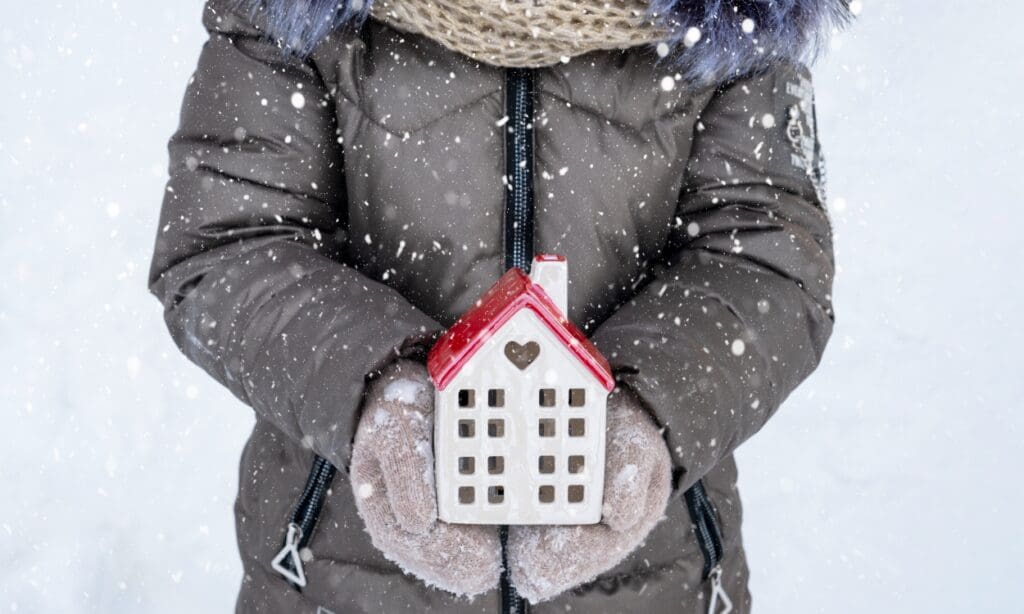
The British summer time seems to be over, and the colder days are on their way, which is why the autumn months are the perfect time to ensure your home is ready for winter. By taking the time to complete some simple steps, you can help to make sure that your energy bills don’t skyrocket this winter, and that you stay warm and cosy too. #1 – Get your boiler serviced Now we aren’t just putting this at the number one spot because that is one of the services we offer. It’s there because if your boiler does break right when you need it, no other ‘winter home’ tricks will keep your house warm. We recommend getting your boiler serviced annually, and the transition period between summer and autumn is the perfect time to do so. By getting your boiler serviced, you can ensure that it is in full working order before winter hits, which reduces the likelihood of finding yourself in an emergency situation. As well as this, a neglected boiler will see a shortened life expectancy and is likely to end up costing you more money in the long run. An efficient boiler, on the other hand, will keep your costs to a minimum and keep the manufacturer’s warranty. #2 – Have a powerflush When you get your boiler serviced, your heating engineer will carry out a test on the water in the heating system. As a result of this test, they may advise you to have a central heating system power flush if they notice any problems. A power flush removes any debris and byproducts such as rust and sludge, to ensure that your central heating system is working properly. #3 – Bleed your radiators If you’re going to the effort of getting your boiler checked, you should probably bleed your radiators while you’re at it. Radiators need bleeding when there is air trapped in them. Trapped air means that the central heating system isn’t working efficiently, and it can take a longer time to warm the room, which can cost additional money – which is not ideal! Bleeding your radiators is easy, and will ensure that your heating is working quickly, efficiently and cost effectively. #4 – Look into draught-proofing Draught-proofing is when you seal up tiny gaps in your home to prevent cold air from entering, and hot air from escaping. Draught-proofing can be relatively easy to do yourself, using cheap draught excluders for letterboxes and around doors, and can save you energy and money as the months get colder. Here is a link to Amazon’s draught excluders if you are interested – draught excluders #5 – Insulate your pipes to prevent them from freezing Frozen pipes can cause issues. Big issues. Luckily, it is easy to insulate your pipes to prevent this issue by using cheap sponge covers. You can also stop your pipes freezing by leaving your heating on low at all times. #6 – Find out where your stop tap is If your pipes do freeze over, it is a good idea to find your stop tap so that you can turn off the water supply in an emergency. #7 – Clear out your gutters When the temperature gets cold, debris in your gutters can freeze and cause damage to your roof. Good drainage also helps to stop seeping damp and large leaks, so before the weather gets too chilly, it is a wise idea to grab a ladder and clear them out. #8 – Get your roof checked While you’re cleaning your gutters, it may also be a good idea to hire a professional to make sure your roof is in tip top condition. This will prevent any leaks as the weather gets worse, and will ensure you’re not wasting money on your energy bills by heating the outside of your home, rather than keeping it all inside. #9 – Install a smart meter Installing a smart meter will help you to keep an eye on your energy usage as the months get colder, which can help you to prevent your energy bills being higher than you expected. Smart meters are free to install and all energy suppliers are required to offer you one by 2025, so it’s a good idea to get one sooner rather than later. #10 – Prepare your outside spaces It’s essential to prepare your outdoor space for the winter season. Make sure your garden is clear and tidy. Secure greenhouses, plant pots, and wheelie bins to stop them from being carried away by strong winds, and stay on top of leaf removal throughout autumn to prevent a buildup of leaves in your garden. Wet, icy leaves can be a serious hazard, so clearing them away before it gets too cold is important to prevent slips and falls. How GreenSmart can help At GreenSmart, we offer a range of different services that can help you to prepare your home for winter, such as boiler services, repairs and replacements, power flushes and underfloor heating installation. Contact us today to speak to one of our engineers about your specific requirements, and find out how we can help you.
Smart Homes: How GreenSmart is embracing home automation
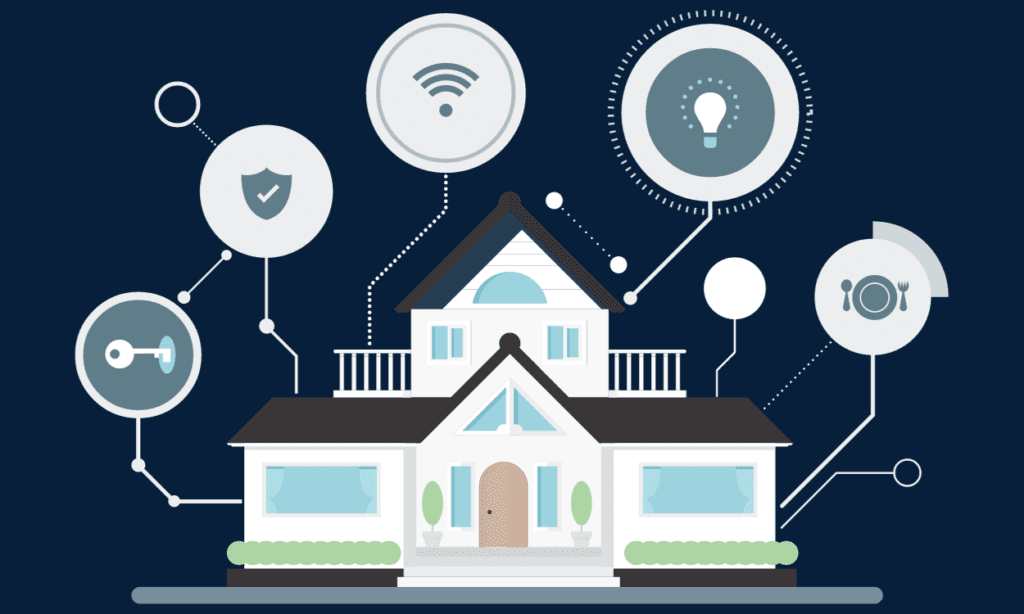
Learn about what smart homes are, how they enhance convenience, comfort, and efficiency and what trends are making smart homes the future.
How to prevent pipes from freezing over this winter

With the UK weather becoming more and more unpredictable, we need to be prepared for any eventuality. Without the proper care and maintenance, your pipes can easily freeze over in the plummeting winter temperatures. Preventing your pipes from freezing over is easy. Repairing damage from burst pipes isn’t! Luckily, GreenSmart are here to help with our guide on how to prevent your pipes from freezing over this winter. Why can frozen pipes burst? When water freezes, it expands. When water inside a pipe freezes, the expansion pressurises the pipe from the inside. Some pipes, depending on their age, corrosion level, type of pipe, and the volume of frozen water inside them, will burst at this pressure. In 2021, the average cost of weather-related home insurance claims for burst pipes was £9,300. And with the issue being an easy one to prevent, it’s definitely worth the time and effort. How to prevent your pipes from freezing? There are a number of different things that you can do in order to help stop your pipes from freezing. Have your boiler serviced Making sure that your boiler is in top working condition through an annual boiler service can prepare your pipes and system for the colder weather. If your boiler isn’t working properly, the cold spots will be most vulnerable to the low temperatures. Insulate your pipes and water tanks Insulating your pipes is one of the best ways to prevent them from freezing. Focus on outdoor pipes and pipes in colder areas of your home such as loft spaces and garages. You can buy pipe sponge covers reasonably cheaply, however you can also make your own. Leave your heating on In this cost of living crisis, most people are doing everything they can to keep their energy bills low, like turning your heating off when you’re not home. However, leaving your heating on between 12 and 15 C whilst away from the property keeps the air inside your house warm and helps to stop internal pipes from freezing. Keeping cabinet doors and any loft hatches open will also allow warm air to circulate around your internal pipework. Run your taps It’s harder for water to freeze if it is running, so it is important to turn your taps on and off regularly and allow them to trickle so that water is continuously moving. Know where your stop tap is In the eventuality that your pipes do freeze, it is essential that you know where your stop tap is and how to stop the water flow to your home. Turning off the water supply to your home can prevent more water from entering the affected pipes and causing further damage. How to thaw frozen pipes If you turn your tap on after a bout of cold weather and only get a small trickle of water, it is likely that your pipes have frozen. Luckily, if you catch it early enough (before the pipe bursts), it is relatively easy to thaw out frozen pipes. Apply heat Apply heat to a section of your frozen pipe. You can use a range of different heating methods, such as wrapping the pipe in towels soaked in hot water, or electronically heating the pipe with a heating pad, hairdryer or a portable space heater. Ensure that you apply the heat until your full water pressure is restored. If you can’t find the frozen area or it is inaccessible, contact a licensed plumber. Keep the tap on As you start to thaw out areas of the frozen pipe and the ice begins to melt, water will begin to flow. By keeping the faucet open, you allow water to flow more freely through the pipe, helping to melt the rest of the ice. How GreenSmart can help At GreenSmart, our friendly team of gas safe engineers can offer support to help prevent your pipes from freezing this winter, and even have the expertise to thaw them out if necessary. Get in touch with us today to find out how we can help you.
Our tips to reduce your gas and electricity bills

The average UK home uses around 2,900 kWh of electricity and 12,000 kWh of gas in a year. With the cost of living crisis putting a strain on everyone’s disposable income, most people in the UK are trying to find ways that they can cut back in order to save money. As part of this, many people want to reduce their bills as much as possible. Because Ofgem’s price cap is on energy units, rather than your overall bill, reducing your energy consumption can reduce your energy bills. Luckily for you, we’re here to help with some useful tips on how to reduce your gas and electricity bills. Let’s jump straight in! Tip #1 – Turn off standby How often do you turn your TV off properly? We mean off at the wall, so that little red standby light isn’t on? We’ll take a guess at not often. Most electrical appliances in your home have the ability to be switched off at the plug without disturbing their programming. It seems insignificant, but turning these appliances off of standby mode can actually save you around £60 a year! Tip #2 – Think about draught-proofing your doors and windows Unless you have a new build, chances are that you’re losing a lot of your heating through your doors and windows, gaps around your floors, and up your chimney. This is, obviously, a big waste of money, as why would you pay to heat your chimney?! Professional draught-proofing can be expensive, costing you around £300 depending on what you get done, but you can DIY your draught-proofing for a fraction of the cost, and it can save you around £50 a year on your energy bills! Tip #3 – Install a Smart Thermostat Smart thermostats are handy little electronic devices that are designed to control and manage the heating and ventilation systems in your home. Unlike traditional thermostats, which require manual adjustment, smart thermostats are equipped with sensors, Wi-Fi connectivity, and advanced algorithms to automate and optimise temperature control. Smart thermostats can make your heating more efficient by only warming the rooms you are using. They can be controlled from your phone rather than a static home device, and use their sensors and algorithms to learn how long it takes to heat the rooms in your home to a specific temperature, so that you are able to have your room at its ideal temperature at exactly the right time. If you installed smart thermostats, programmers and thermostatic radiator valves, you could save around £75 a year! Tip #4 – Install a Smart Meter A smart meter is an electronic device that allows you to easily read your gas/electric readings. It takes automatic readings of your gas and electricity usage which are then sent to your energy supplier and displayed to you on your screen. They are a cost effective way of reducing your energy consumption, because there is no upfront cost for getting a smart meter installed in your home, and your energy supplier only bills you for the amount of energy you actually use, rather than an estimation. Because you get an immediate view of your home’s energy consumption as and when energy is being used thanks to real-time data, you’ll be able to better manage what you use and how much, which can ultimately reduce the amount of money you spend. Tip #5 – Be careful with your washing and avoid your tumble dryer Washing and drying your laundry is a never-ending chore. Not only does this make it extremely tedious, it also costs you a fortune! However, by being more careful with your washing machine and tumble dryer usage, you could save around £90 a year! We understand that it might be difficult to reduce the use of your washing machine, however, if you use your washing machine on a 30-degree cycle instead of higher temperatures, or reduce your washing machine use by one run per week for a year, you may be able to save £30! Tip #6 – Upgrade your boiler Though not a cheap option, costing, on average, between £1,000 and £3,000, upgrading your old boiler to a newer one will save you a lot of money in the long run, and can reduce your annual heating bills by 20 – 35%! Tip #7 – Take shorter showers A lot of us love taking a soak in the bath or scrubbing our worries away with a nice long shower. However, reducing your shower time to 4 minutes or less could save a typical household £75 a year on their bills! As well as this, if you swap one bath a week to a 4-minute shower, you can save around £17 annually! How GreenSmart can help At GreenSmart, we offer a range of different services that can reduce your energy consumption, such as boiler replacements and various green plumbing solutions.Contact us today to speak to one of our engineers about your specific requirements and find out how we can help you keep the cost of your bills lower!
What is the ideal room temperature?
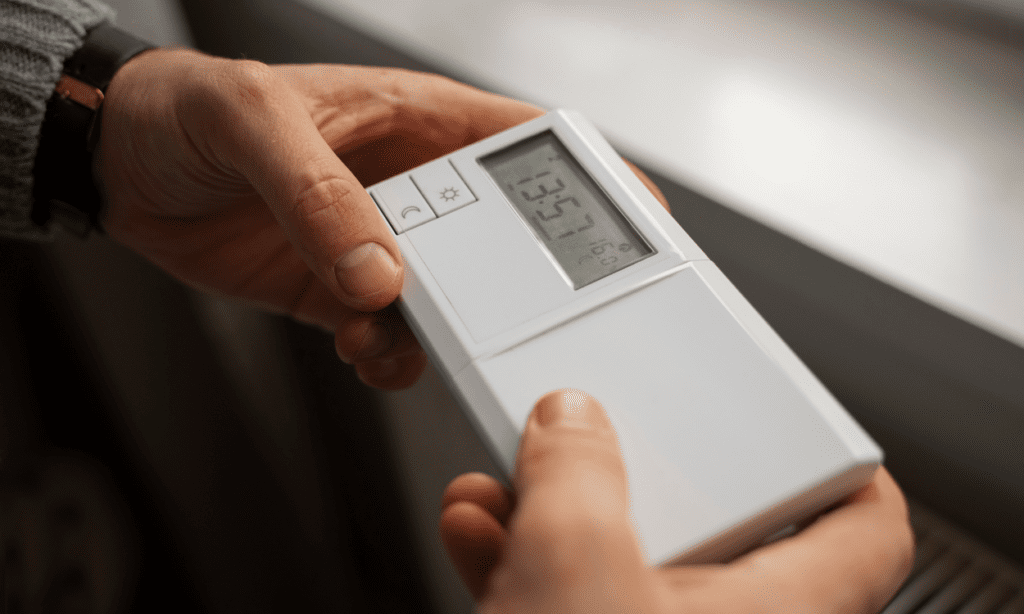
Choosing the optimal temperature for your home may be a point of contention. With the British weather not ever seeming to get better, but the cost of living crisis driving energy bills sky high, and your co-habitants fighting over the thermostat as often as they fight over the TV remote, you might be wondering if there is one ideal temperature for your home. Well, GreenSmart are here to help with this handy guide on the most comfortable temperatures for the different rooms throughout your home and the different people who inhabit them. What do we mean by ‘room temperature’? When discussing average or ideal ‘room temperatures’ throughout this article, we are referring to how hot or cold the air in a particular room is. This can be affected by a number of different factors, including the weather outside, the humidity and the purpose of the room in the house. How we experience temperature will also depend on some independent factors, such as our age, our level of activity and our choice of clothing. For example, the living room would feel warmer to someone who has just returned from a workout than from someone who has been sitting in front of the TV in shorts and a t-shirt. Additionally, an older couple may choose to heat their home at a higher temperature than a younger couple, as older people tend to feel the cold more. What is the average room temperature in the UK? Interestingly, the average room temperature in the UK is 3°C lower than what the population believe to be the ideal room temperature, at 18°C in comparison to 21°C. This could suggest that people have been turning their thermostats down a few degrees in order to save money or do their bit for the environment. So, what is the ideal room temperature? According to the Energy Saving Trust, the ideal temperature for your home is between 18°C and 21°C – so we’ve pretty much nailed it as a population! However, it’s important to keep in mind that the different rooms in your home will have different ideal temperatures, because the optimal temperatures for specific rooms usually depend on their use. Rooms you spend more time in, such as living rooms and dining rooms, should be on the warmer side, whereas hallways, landings and storage rooms can afford to be kept at a lower temperature, as they are not used for long periods of time. The ideal temperature for your living room The ideal temperature of your living room is between 19 and 22°C, because this is the room that you probably spend most of your time – often sitting still for extended periods. Because you won’t be moving around, it is more likely that you will get a bit cold. However, higher temperatures will use more energy, so 21°C is probably the highest temperature you’ll want to go. The ideal temperature for your bathroom We don’t necessarily think of our bathrooms as a room that we need to heat at high temperatures, however who wants to get out of the shower to a freezing cold room? Not us! For this exact reason, ideal temperatures for bathrooms sit at around 22°C. Running the bath or shower will increase the humidity of the room, keeping the air warmer, so your boiler won’t have to work as hard to maintain the temperature, saving you money. The ideal temperature for your bedroom Despite spending a lot of time in your bedroom, it doesn’t actually need to be as warm as the rest of your house. This is because you spend most of your time there sleeping. Most people don’t like being too hot at night, so the optimal temperature for your bedroom can be anywhere between 15°C and 20°C, depending on your preference. The bedroom is the perfect place to keep costs down, as you can keep your thermostat lower but investing in high-tog duvets and blankets. The ideal temperature for your kitchen Many of us get hot whilst we’re cooking! When we have the oven on and food bubbling away on the hob, the temperature and humidity of the kitchen fluctuates. Because of this variation in heat and humidity, the optimal temperature for your kitchen is between 18°C and 20°C. The ideal room temperature for the elderly According to the NHS, cold weather can worsen some health problems and possibly lead to serious complications, especially if you’re 65 or older. Because of this, it is especially important that elderly people stay warm. In order to stay warm, if you’re 65 or over it is recommended that your home temperature is at least 18°C and a temperature that feels comfortable to you. To avoid draughts, close your curtains and keep internal doors shut to avoid the heat from your radiators being lost into the hallway. The ideal room temperature for a baby According to the NHS, a baby doesn’t need a hot room. In fact, it could be dangerous to keep a baby in a room that is too hot, especially overnight. Overheating can increase the risk of sudden infant death syndrome (SIDS), so it’s essential that they are kept at a comfortable temperature at all times. The NHS suggests the ideal bedroom temperature for a baby is between 16°C and 20°C. You should also try to keep your baby’s room cool by closing the curtains during the day to keep the sun out and ensuring the room is well-vented. The ideal room temperature when pregnant Particularly in warmer conditions, a lot of pregnant women experience warmth and unease. Therefore, it becomes crucial to adopt measures to maintain a comfortable and hydrated state, safeguarding both your own well-being and that of your baby. Although a specific optimal room temperature isn’t suggested, the key is to ensure the room ambiance is perfectly suited to your comfort. The ideal room temperature for pets Pets are as much part of the family as you are, so you want to ensure that they are comfortable
Eight ways to improve your home’s EPC rating
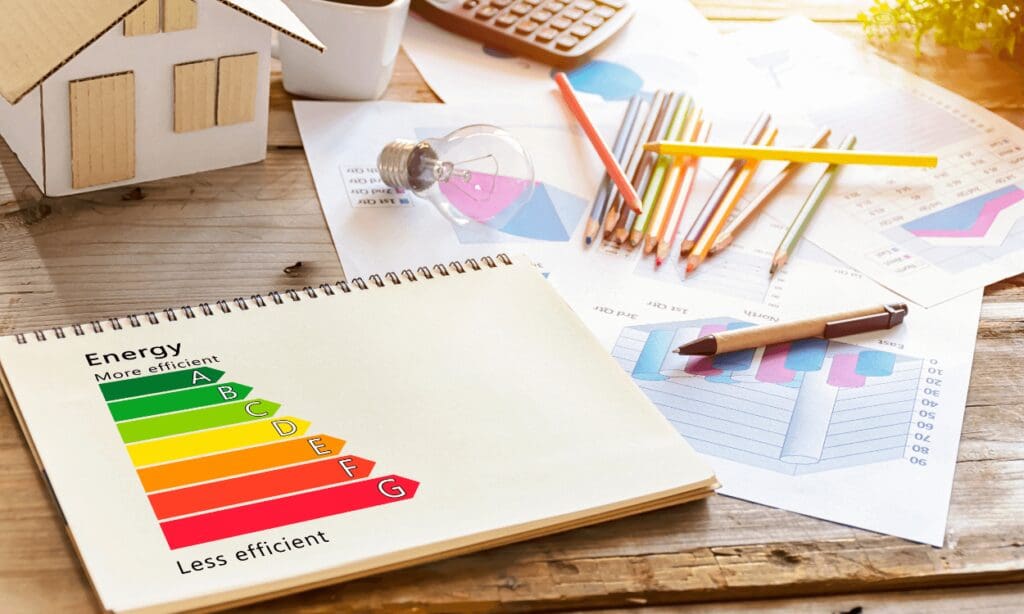
With environmental issues dominating the news, and the cost of living crisis meaning that everyone is scrimping and saving, you might be wondering what you can do to improve the energy efficiency of your home. In your research, you might have come across a little acronym called an EPC rating. But what exactly is an EPC rating, and how and why should you improve your home’s score? GreenSmart are here to help with our quick guide on how to improve your home’s EPC rating. About GreenSmart Services: Plumbing and Heating Services | Plumbing Contractors What is an EPC rating? EPC stands for Energy Performance Certificate. An EPC rating shows how energy efficient your property is. EPC ratings are valid for 10 years, but can be redone earlier if any improvements have been made to the property. They are key for individuals looking to buy, sell or rent properties, as it gives an indication of how much the inhabitant will spend on energy bills, and the carbon emissions of the property. What is the EPC grading system? Your home’s energy efficiency is measured on a scale from A to G, with A being the highest and G being the lowest possible rating. The scale is colour coded to give people a clear picture of how efficient their home is. EPC ratings are calculated by a qualified assessor. They will test various factors, such as how much potential there is for heat and energy loss, what level of insulation you have and whether or not you have double glazing. Following inspection, each factor will receive a score depending on its efficiency, and the assessor will work out your property’s overall EPC rating based on the average score. The assessor also scores each part of the inspection using SAP points (Standard Assessment Procedure). SAP was introduced by the government as a way of measuring a property’s energy and environmental performance. Each of the EPC bands are scored as follows: Why should I improve my home’s EPC rating? There are several different reasons that it might be worth you improving your property’s EPC rating. Landlords, for example, have to have an EPC rating for all of their properties, and are legally unable to rent out a property if it doesn’t meet the minimum requirement of an E. There are plenty of other reasons why as a homeowner, you might want an EPC rating. For example, by understanding how energy efficient (or inefficient) your home is, you will be able to implement more efficient measures, which will lower your consumption and therefore reduce your energy bills. On the topic of saving money, according to the Energy Saving Trust, you may even be able to achieve lower mortgage rates through Green Mortgages. As well as this, if you are considering selling your property, improving its EPC rating will also likely improve the value. And lastly, if you are conscious of your carbon footprint, by understanding how efficient your house is and undertaking some simple steps to improve it, you will lower your carbon emissions. How to improve my EPC rating? So, we’ve spoken about what an EPC rating is, how it is graded and why you should consider improving it, but how do you go about making your home more energy efficient to boost that score right up? We are here to help with eight handy tips on how to improve your rating, ranging from relatively inexpensive to the more pricey end of the scale. #1. Seek help from your energy supplier First thing’s first, you might be able to get some energy-saving help from your energy supplier under the Energy Company Obligation Scheme. If you claim benefits such as Child Tax Credit, Working Tax Credit, or Universal Credit, you may be eligible for help with the cost of insulation work or replacing or repairing your boiler. If you own your house, it must have an energy efficiency rating of D, E, F or G to be eligible for the scheme. If you rent from a private landlord, the house must have an energy efficiency rating of E, F or G to be eligible and you have to have the owner’s permission to do the work. If you live in social housing that has an energy efficiency rating of E, F or G, you might be eligible for help with insulation or installing a heating system for the first time. #2. Upgrade the lighting to LED light bulbs An easy way of improving your EPC score is by switching your old halogen or incandescent light bulbs with LED ones. It won’t boost your score significantly, but if your EPC rating is right on the margin and it won’t take much to increase it by a level or two, switching to these more energy-efficient, eco-friendly light bulbs could make the difference. LEDs have become increasingly popular over the last few years because they are efficient and could create long-term savings on your energy bills. #3. Install a smart meter Whilst installing a smart meter won’t improve your EPC rating on its own, it will be able to give you an insight into how much energy your home uses and a greater understanding of which changes you need to take. Because of this, you are more likely to have more success when trying to improve your EPC rating if you have a smart meter installed. #4. Invest in double or triple-glazed windows Most modern homes have double glazing, however if you have an older property, the single glazing might be dragging you close or even below the minimum EPC rating. By investing in double or triple-glazed windows, you can significantly reduce the amount of heat lost through your windows and help to boost your property’s EPC rating by approximately five to ten points. As well as this, it is a relatively cost-effective step, with terraced properties usually costing between £2,000-£5,000 to upgrade. Triple glazing is a more drastic step, though it is rising in popularity. It is
The ultimate heating, gas and plumbing glossary
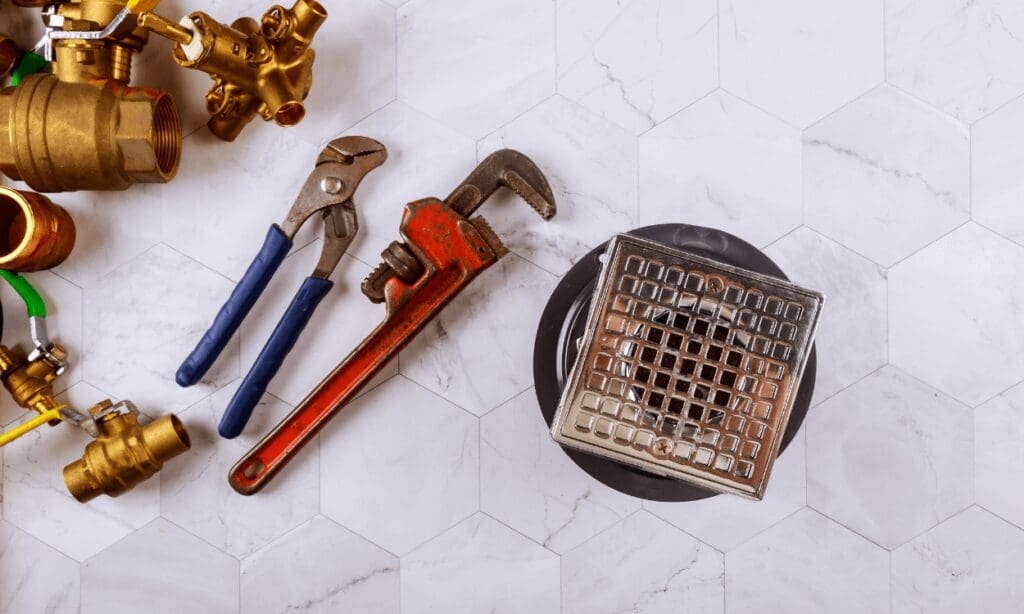
The world of heating and plumbing can be confusing. It’s full of jargon that no one understands, which can lead to uncertainty and worry if you need to speak to a professional. Have no fear, GreenSmart to the rescue! Our alphabetised list of the common terms used in the plumbing, heating and gas industry will no longer leave you wondering what on earth your plumber just said. So, without further ado, let’s get into it. A. Automatic Air vent: A device used to release trapped air from heating systems or pipes, ensuring efficient water or air circulation and preventing airlocks. Airlock: When trapped air blocks the water from getting to the hot water taps or central heating system. B. Back Boiler: Large boilers fitted behind a fireplace that were installed in the 1960s, 70s, and 80s. Back boilers are no longer being made, and should be replaced. Balancing Radiators: This makes sure that all of the radiators around your home are heating up evenly. This process is tricky and time consuming, so should be undertaken by a professional. Bleeding radiators: The process of freeing trapped air from the heating system in order to regulate the heat circulation. Boiler: A heating appliance that uses gas, oil, or electricity to heat water providing central heating and hot water for buildings. C. Capacity (in terms of cylinders): The amount of water in litres that the cylinder is able to store. Homes with more bathrooms will need a cylinder with a larger capacity. Combination (Combi) boiler: A central heating and hot water system in one unit. It differs from other boilers as it doesn’t require any external parts. They are only recommended for homes with one bathroom, as their hot water supply is limited. Condemned Boiler: A boiler that has been labelled unsafe by a professional heating engineer. They will stick a ‘Danger Do Not Use’ sticker to the boiler, and you should seek to get it replaced as soon as possible. Condensate Pipe: When a condensing boiler recycles heat from waste gases, it produces condensation. This liquid is sent down the condensate pipe and directed away from the property to an external drain. Condensing Boiler: A high-efficiency boiler that recovers and utilises heat from water vapour (condensation) to increase overall efficiency. D. Domestic Hot Water (DHW): Water that comes from a hot tap or cylinder. Drainage: The system of pipes and fittings designed to carry waste water from buildings to a sewer or other disposal point. E. Electric boiler: Rather than burning fuel, electric boilers turn electricity into heat. They’re very efficient as all of the electricity can be turned into heat. Energy-related Products Directive (ErP Directive): A directive introduced by the EU in 2015 to reduce carbon emissions. It included new criteria for manufacturers to produce more energy-efficient products and a new labelling system to classify product efficiency. This updated the way we classify boiler efficiency. Expansion Vessel: A component in a closed heating system that absorbs the expansion of water as it heats up, helping to maintain a safe pressure level. F. Fan: This is used to push or pull harmful gases through the boiler’s flue pipe. As fuel is burnt in the boiler, harmful gases are released, and it is crucial to have a fan to redirect those gases out of the boiler and away from your home. Feed (Cistern) and Expansion Tank: Fitted in the loft, the feed and expansion tank fills with cold water from the mains, which is fed to the heating system. Flue: Waste gases from burning fuel are emitted out into the atmosphere through the flue. These need to be fitted in a safe location inline with the Boiler Flue Regulations. Fossil Fuel: A natural energy resource formed from the remains of ancient plants and organisms that lived millions of years ago. These fuels include coal, oil, and natural gas, and are considered non-renewable because their formation process takes millions of years. Fossil fuels are burned to produce energy, such as electricity, heat, and transportation fuels, but their use releases carbon dioxide and other greenhouse gases, contributing to global warming and climate change. G. Gas: Most boilers across the UK run on natural gas. It’s supplied directly to homes via the gas network and then burned by the boiler. Gas Metre: A device used to measure the amount of natural gas consumed by a building. Gas Safe: A gas boiler service, repair, or replacement must be carried out by a Gas Safe registered heating engineer. They’re the only people qualified to work on gas appliances. Green Plumbing: The investment in eco-friendly modifications and products to minimise water consumption, conserve energy, decrease chemical effects and lower utility bills. Ground Source Heat Pump (GSHP): A renewable heating system that extracts heat from the ground to provide warmth for buildings. It utilises the constant temperature of the earth to heat a fluid, which then transfers the heat to a heating system or hot water supply. H. Heat Exchanger: A device inside the boiler that allows the heat from burning gas to be transferred through the surface of internal pipes to the water supply. This creates the hot water, which is then directed around the heating system. The heat exchanger is a crucial part of the boiler. I. Immersion Heater: An electric heating element used to heat water in storage tanks, typically used as a backup for central heating systems. Increase Boiler Pressure: Boiler pressure should sit between 1 and 2 bar (always check the manufacturer’s instructions though). Your system has low pressure if it drops below 1 bar and needs to be increased. You can take a pressure reading by looking at the pressure gauge on the boiler. Insulation: A material (that often looks like a thick fluffy rug) used to prevent heat escaping from the home through the walls, roof, or floor. Increasing the level of insulation in your home will increase efficiency and help to lower your heating bills. J. Joule: The unit of energy
Which boiler is the best fit for my home?
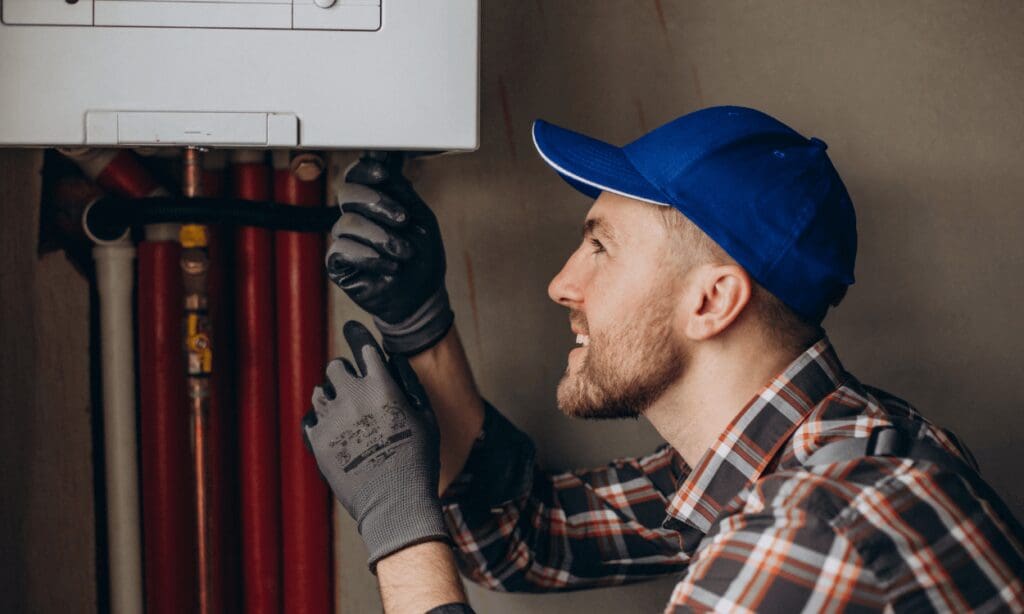
Need a new boiler replacement but unsure on which one you need? With so many different options on the market, choosing the right boiler for your space can be a minefield. Luckily for you, our friendly team here at GreenSmart are here to help you with our handy guide on which boiler is the best fit for your home. Of course, we will always perform a site survey to check the suitability of a boiler for your home. What are the different types of boilers? There are a range of different types of boilers for you to choose from. Your choice will be dependent on a range of factors, including your requirements and the size of your property. There are three main types of boiler, which we will discuss below. Combi-boilers Combination boilers, also referred to as combi-boilers, are the most popular boiler choice in the UK. They are named combination boilers as they deliver both heating and hot water. They work by supplying instant hot water directly from the mains cold water supply to your taps, eliminating the requirement for a hot water cylinder. With a combi-boiler delivering hot water, you can enjoy a shower without the necessity of an additional shower pump. These boilers integrate all heating system components into a single unit, removing the need for a separate hot water cylinder and associated loft tank(s). This compact design makes them exceptionally suitable for properties with limited space. For homes with a bit more room, there is another, slightly bigger type of combi-boiler, known as a storage combi-boiler. These boilers work in a similar way to combi-boilers, but incorporate a hot water tank, similar to conventional systems, which allows hot water to be stored and used later. Heat-only boilers A heat-only or regular boiler heats up the heating system water and diverts it between the hot water cylinder coil and the radiators in your heating system. This system utilises a hot water cylinder which stores the hot water that is sent to your taps. This hot water is heated indirectly by the heated heating water that passes through a coil within the cylinder. The two bodies of water never directly come into contact. These systems are better-suited for larger homes that have multiple bathrooms and lots of radiators as the cylinder can take up a considerable amount of space. A lot of people store the cylinder in a cupboard and use it as an airing cupboard. System boilers The third boiler option is the system boiler. System boilers function in a very similar way to heat-only/regular boilers except they have some of the system components included within them like the circulation pump and expansion vessel. System boilers are particularly well-suited for properties with multiple bathrooms or higher hot water demands as they work alongside a hot water cylinder. How to choose the right boiler for your home Not all boilers are suitable for every home and it’s important that you choose the right type with a good plumbing and heating service to ensure that your heating and hot water works efficiently and effectively. There are a few different factors that will help you decide which boiler is right for you and we’ve listed them below. Existing system A lot of the time, it is cheaper and more practical to upgrade your old boiler to a new one that is the same type. However, there may be a few times or reasons why this wouldn’t be advised, such as in an old property or a home in which will be extended to incorporate a lot more rooms or bathrooms. Available space The space that you have available in your home will often be the biggest reason behind your choice of boiler. For example, if you have minimal storage space, it would be unwise to choose a heat-only boiler, as these require a lot more space for the hot water cylinder. Hot water usage Your choice of boiler will also depend on your hot water usage. If you anticipate a demand for hot water from various outlets at the same time, a system boiler or heat-only boiler with a hot water cylinder may be more appropriate than a combi boiler. How to choose the right size of boiler for your home? Once you have chosen which type of boiler is right for you, you will need to figure out which size boiler you need. Again, this is down to a number of different factors. Property size One of the biggest factors when choosing what size boiler you buy is the size of your home. Because your boiler will be your main source of heating for your home, you need to make sure that it is big enough to heat every room. Domestic boiler size is measured in terms of heat output, which can range up to 70kW. Usually, the size of your boiler is determined by your number of radiators or your hot water demand. The size of heat-only and system boilers is determined by the amount of radiators you have and your hot water cylinder. You should avoid choosing a boiler that is too big for your home, as it will result in a more expensive energy bill and is a waste of gas and electricity. For combi-boilers, the boiler size is usually determined by the hot water demand. A qualified heating engineer will assess this for you prior to final recommendation and fitting. Hot water demand Another factor that can help you figure out your boiler size is your hot water usage. Typically, for households with one bath and shower, a boiler with a capacity of 24-30 kW is often recommended. If there is an additional en-suite bathroom, opting for a larger 30-35 kW boiler might be advisable. However, if your home has multiple bathrooms that are likely to be used at the same time, a system or heat-only boiler with a storage cylinder for hot water may be more appropriate. Heat loss There is an equation
A guide to gas safe regulations & responsibilities for landlords
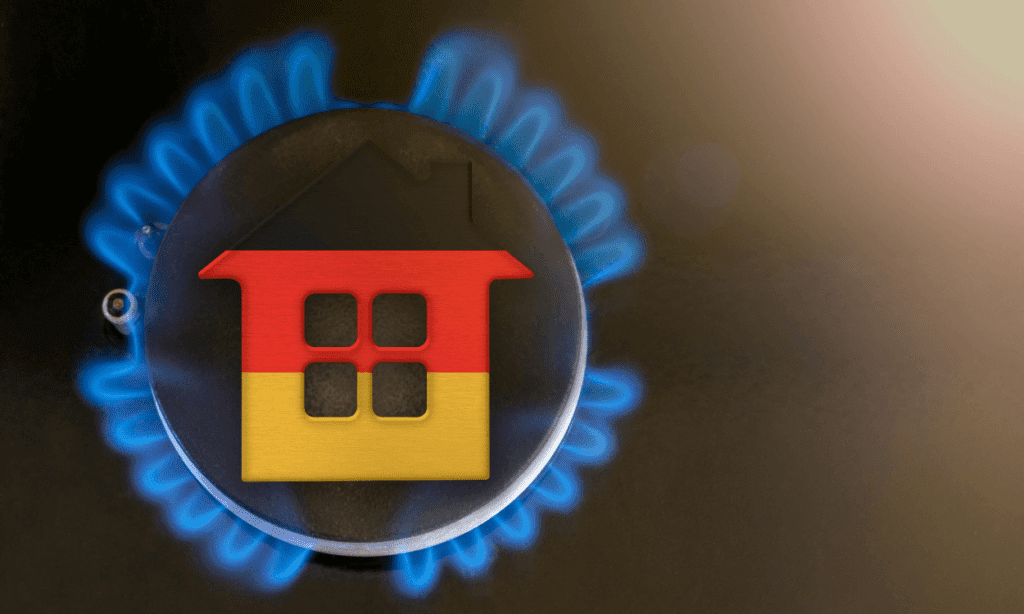
If you rent out a property, such as residential dwelling, room to let or rental holiday accommodation that is subject to lease or licence agreement, you are responsible for your properties and have a duty of care to your tenants. As part of this responsibility, you have to ensure that your gas safety checks are in place and up to date. What are my gas safety responsibilities as a landlord? As a landlord, you are obligated to adhere to the Gas Safety (Installation and Use) Regulations 1998 (GSIUR). These regulations clearly state your duties in ensuring the safety and optimal functionality of all gas appliances, fittings, chimneys, and flues within your property. If you choose to rent out a property that includes gas appliances, you have three main responsibilities: Gas safety checks Annual gas safety checks are mandatory and must be conducted by a qualified Gas Safe Engineer. These inspections are required to assess the safety and functionality of all gas appliances, pipes, and flues that are part of the property. Following the inspection, you will receive a certificate, which must be shared with your tenants within 28 days. You can arrange for a gas safety check to be carried out any time from 10-12 months after the last completed check, without affecting the original expected expiry date. Appliances owned by your tenants are not your responsibility, although you will still need to ensure the safety of any connecting flues, unless they’re solely connected to the tenants’ appliance. Installation pipework isn’t legally required to be checked as part of the yearly gas safety check. However it is recommended by both the Gas Safe Register and the HSE to ask your Gas Safe registered engineer to test for tightness on the whole gas system, including installation pipework; and visually examine the pipework as much as possible. There are no legal requirements that state you must keep these maintenance records, but you are required to prove that you have maintained the pipework, appliances and flues and completed any required repairs. Gas Safety Record By law, you are required to give a copy of your Landlord Gas Safety Record to your tenants within 28 days of the gas safety check. You don’t need to do a gas safety check for each new tenant, however you do need to provide a copy of the most recent certificate at the start of each new tenancy. For rental periods of less than 28 days, ensure that the copy of your gas safety record is clearly displayed within the property. You’ll need to keep copies of this gas safety check record until two more gas safety checks have been performed. Maintenance As a landlord, it is your responsibility to ensure that all gas pipework, appliances, chimneys and flues are kept in a safe condition. Unless the manufacturer guidelines state otherwise, we would suggest servicing your gas appliances once a year. Carbon monoxide alarms and landlord responsibilities Following the passing of the Smoke and Carbon Monoxide Alarm (Amendment) Regulations, as of October 2022, a Carbon Monoxide alarm is now required to be fitted in every habitable room of a rental property that contains gas appliances, excluding appliances used for cooking. As a landlord, you are required to test all carbon monoxide alarms in the property to ensure that they are working on the day that a new tenancy begins. Always make sure a carbon monoxide alarm complies with British Standard EN 50291 and carries a British or European approval mark, such as a Kitemark, before purchasing. Check the manufacturer’s recommendations about how to fit and test your alarm to ensure that it is working correctly, and that the batteries are in a good condition. How GreenSmart can help At GreenSmart we have a team of qualified Gas Safe registered engineers that are able to complete your checks and provide your gas safety record. Find out more about our Landlord Gas Safety service or contact us today to speak to one of the team and discuss your requirements.
Five common boiler problems and how to fix them
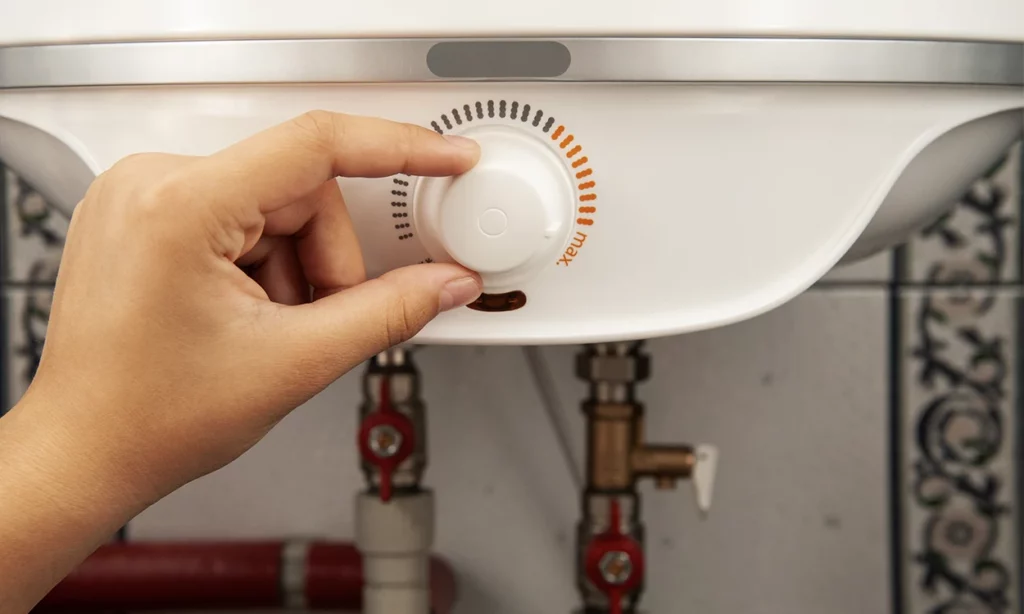
It’s always annoying when your boiler stops working properly. If you are not sure what to do, its best to get a plumbing and heating services engineer to take a look. Boiler problems are actually more common than you think. In fact, one study found that in 2016, one in five homes in the UK suffered a boiler breakdown! Boiler problems could potentially be dangerous if not sorted properly. We want to help you to identify what is wrong with your boiler, so that you know whether the issue is able to be fixed yourself with a simple adjustment or two or if you will need a qualified Gas Safe engineer to fix it for you. 1. Low boiler pressure One of the most common boiler issues is low pressure. Your boiler relies on an optimum pressure level to be able to maintain the circulation of water throughout your system. Usually, you are able to identify if your boiler has lost pressure by looking at the pressure gauge. There could be a number of reasons that you are suffering from low system pressure, such as a leak or you have recently bled your radiators and the system has lost pressure. Leaks within the system can be caused through failed joints or seals. If you spot a leak, do not attempt to open the boiler or fix the leak alone. This is a job for a professional. However, if you can’t spot an obvious leak, or you have recently bled your radiators or kept your heating off for an extended period of time and know this to be the cause, you can top up your boiler pressure yourself. Open the filling loop taps on your boiler until you achieve the desired pressure. This is usually around one bar. Once this is done, close both taps, and your boiler should start to work properly once more. 2. No heating or hot water When your boiler doesn’t do the thing it’s meant to do (heat your home and/or provide you with hot water), naturally you will be frustrated and want to fix the issue as quickly as possible. There can be multiple reasons for your boiler to experience a complete ‘lockout’, including a pressure issue, frozen pipes, faulty valves or thermostat problems. If you’ve checked your pressure and it is normal, reach out to our gas safe general plumbers who should be able to help. They will be able to repair your boiler for you as quickly as possible and get your boiler back to full working order. Learn more about boiler servicing and repairs. 3. Frozen condensate pipe A condensate pipe is an additional pipe that allows slightly acidic waste water to be removed from your boiler, to a suitable termination point. It can be common for the condensate pipe to freeze if it’s ran externally to the property, especially in the colder months, causing the boiler to stop working. Most of the time, you will know when a frozen condensate pipe is causing your boiler to lock out because a relevant fault code will appear on the boiler. This issue is often resolved easily by thawing out the contents of the pipe. Usually, the pipe will be frozen at its most exposed point, such as at the open end of the pipe or at a bend. Pour hot water along the length of the pipe, repeating the process until the pipe has thawed out. Make sure not to use boiling water, as it can crack or damage the pipe. For long-term prevention, it might be a good idea to insulate the pipe, and if it is installed externally, get an engineer to relocate the pipe so that it is inside as much as possible. 4. Radiator faults If you’ve noticed that a radiator is warm at the bottom but cold at the top, then it probably needs bleeding. This is a common issue that occurs when there is trapped air, preventing the circulation of warm water around the entire radiator. It is an easy problem to fix by bleeding your radiators, using a bleed key and a bucket/bowl. If the radiators throughout your house are all heating up at different speeds, they probably need balancing. This is a bit more of a complex procedure, so it is worth contacting a plumber to do this for you. 5. Gurgling, banging or whistling noises coming from your boiler It is normal for your boiler to make some noise whilst it’s in operation, especially when it is staring up. However, if your boiler suddenly begins to make unusual banging, whistling or gurgling noises, this may be caused by other issues. Unusual boiler noises can be caused by air in the system, a faulty pump, low water pressure or even a build-up of limescale. If you notice unusual noises coming from your boiler, we recommend getting in touch with a qualified engineer so that they can diagnose and fix the issue. How GreenSmart can help At GreenSmart, we have vast knowledge of all things plumbing and heating. We pride ourselves on our high standard of work and the excellent customer service that we provide. If you notice any issues with your boiler, feel free to contact us and one of our friendly team will be happy to help.